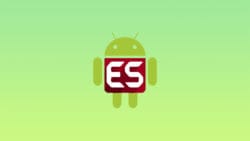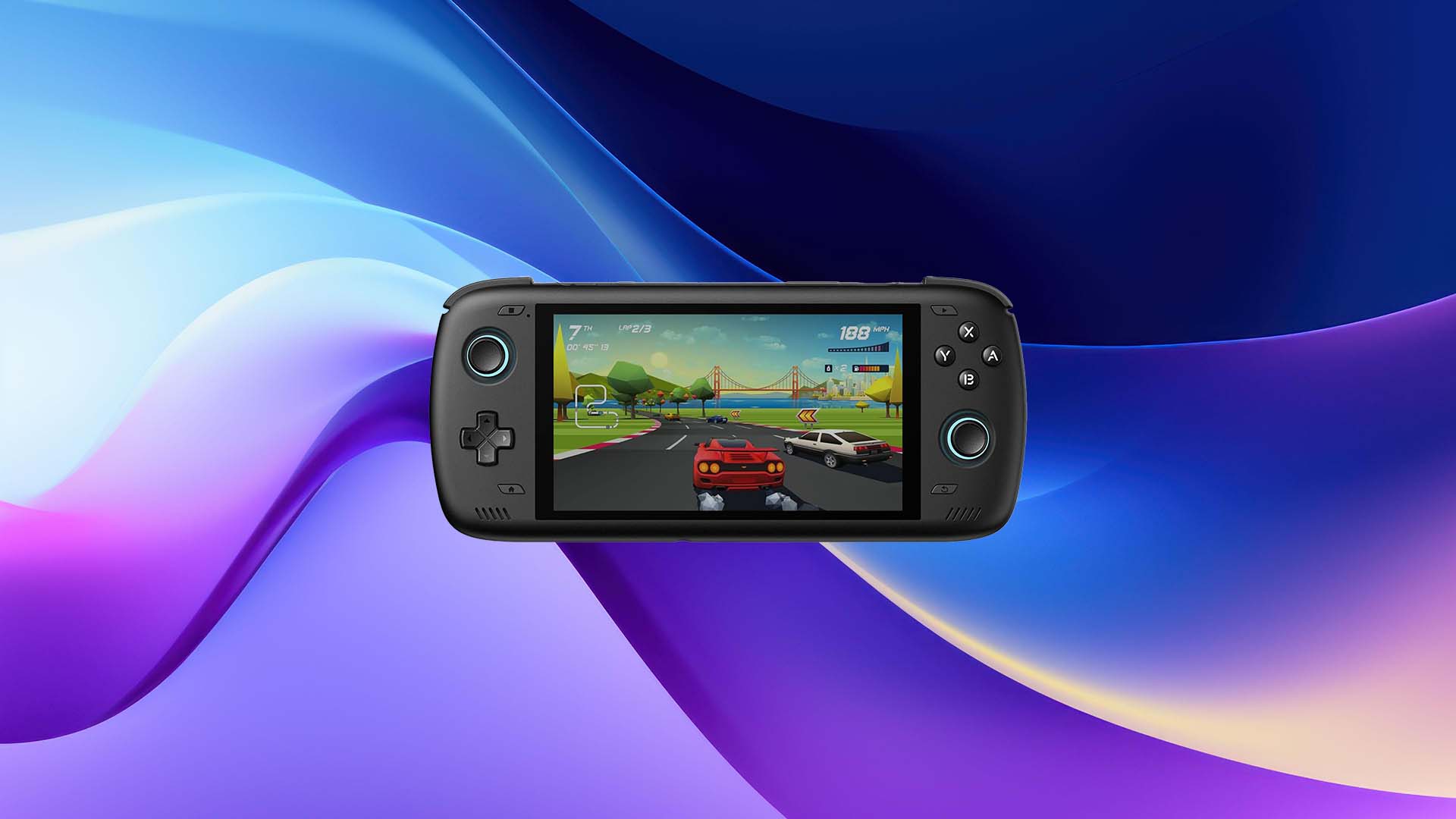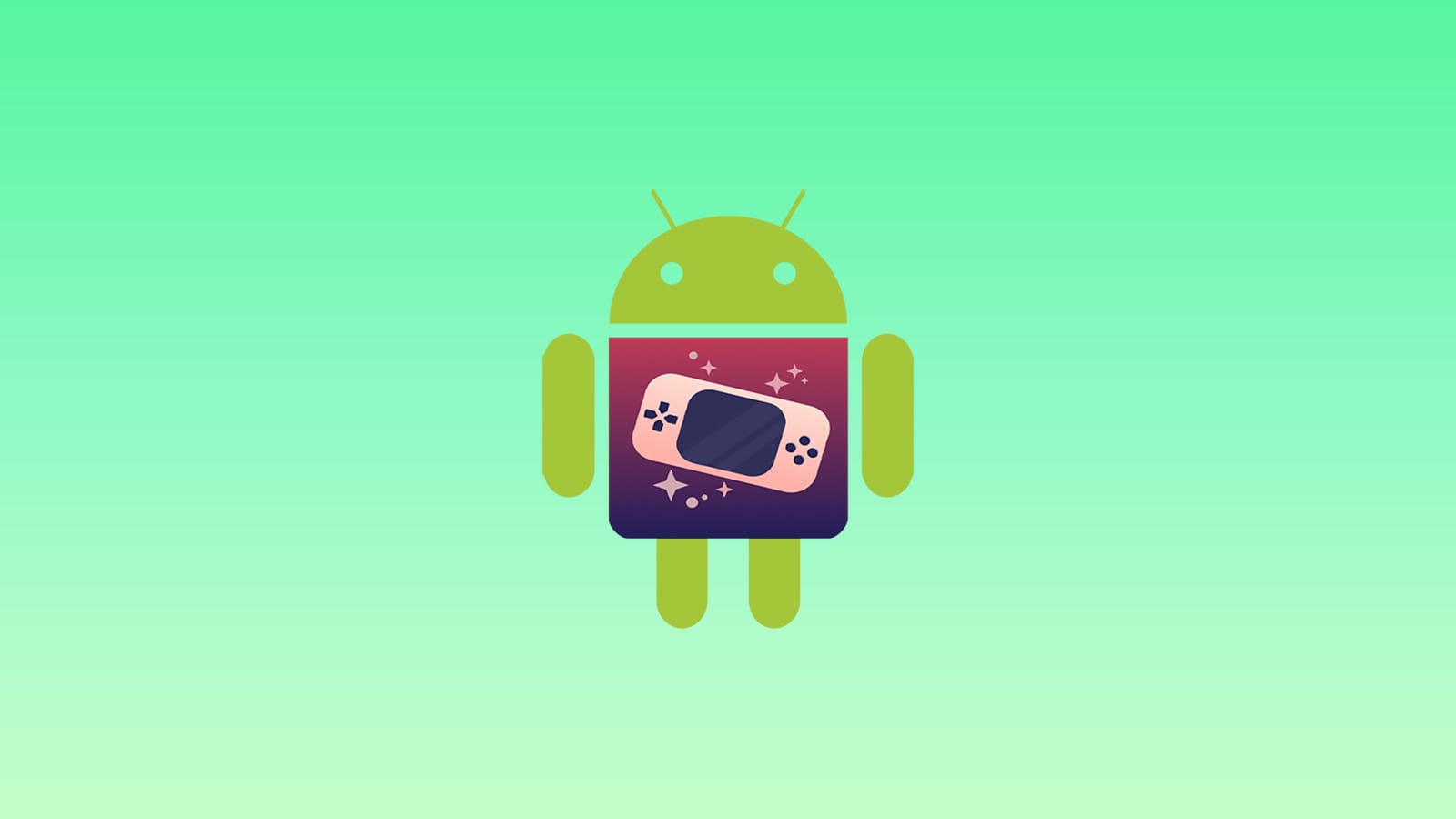The Retroid Pocket 5 has officially entered the ring—and it’s swinging hard. With a vibrant AMOLED screen, modern Android OS, and enough emulation muscle to handle everything from NES classics to PSP bangers, it’s no surprise this handheld is suddenly everywhere. Whether you’re scrolling Reddit, browsing retro gaming forums, or watching YouTube teardown videos, the Pocket 5 is the handheld everyone’s talking about.
So, who’s this device actually for? If you’re a newcomer to retro handhelds, curious about emulation but not sure where to start, or even a seasoned Android tinkerer looking for a powerful pocket-sized machine—you’re in the right place. The Retroid Pocket 5 (and its slightly smaller sibling, the Pocket Mini) are built for flexibility, customization, and performance that punches far above their price tag.
Let’s get started—your retro gaming journey is about to get way more interesting.
Retroid Pocket 5 vs. Retroid Pocket Mini: What’s the Difference?
So you’re sold on the Retroid magic—but now you’ve got a choice to make: Pocket 5 or Pocket Mini? Don’t worry, we’ve got you. These two handhelds are cut from the same high-powered Snapdragon 865 cloth, but they diverge in all the right ways depending on what kind of gamer (or human) you are.
Specs Showdown
| Feature | Retroid Pocket 5 | Retroid Pocket Mini |
| Screen | 5.5-inch AMOLED | 3.7-inch AMOLED |
| CPU | Snapdragon 865 | Snapdragon 865 |
| GPU | Adreno 650 | Adreno 650 |
| RAM | 8GB LPDDR4X | 6GB LPDDR4X |
| Storage | 128GB + microSD | 128GB + microSD |
| Battery | 5,000mAh | 4,000mAh |
| Connectivity | Wi-Fi 6 / Bluetooth 5.1 | Wi-Fi 6 / Bluetooth 5.1 |
| Triggers | Analog L2/R2 | Analog L2/R2 |
| Joysticks | 3D Hall Effect | 3D Hall Effect |
| Colors | GC, 16Bit, Black, White | Saturn, Orange, Black, SFC, 16Bit |
| Price (MSRP) | $219 | $199 |
Screen Size, RAM & Battery Life
Retroid Pocket 5 comes with a roomy 5.5-inch AMOLED screen—perfect for immersive sessions of RPGs, fighters, or even streaming via Moonlight. The extra RAM (8GB) gives it a slight edge when multitasking or playing heavier Android titles. Pocket Mini, on the other hand, goes full pocket rocket with a compact 3.7-inch screen and smaller 4,000mAh battery, but still delivers buttery-smooth gameplay thanks to the same chip under the hood.
Ideal Use Cases
- Big-screen comfort (Pocket 5): Best if you game for long stretches, want something ergonomic for your hands, or plan to play Android games and emulate beyond PS2/GC.
- Pocketable power (Pocket Mini): Perfect if you want a true pick-up-and-go experience, something ultra-portable for commutes or daily carry.
Bottom line: you can’t go wrong with either, but choosing based on how you actually use your handheld will make all the difference.
First-Time Setup: What to Do Out of the Box
So your shiny new Retroid Pocket 5 (or Mini) just landed on your doorstep. Congrats! Before you dive headfirst into your favorite games, there are a few essential setup steps you’ll want to knock out to get the best experience right from the jump.
Booting Up for the First Time
- Press and hold the power button until the Retroid logo appears.
- Give it a minute—first boots always take a bit longer.
- Once you’re in, you’ll land on the default Retroid launcher, which is tailored for handheld gaming (but more on custom launchers later).
Connecting to WiFi
- Swipe down from the top to access the Quick Settings menu.
- Tap the WiFi icon, choose your network, and enter your password.
- You’ll want a solid connection for logging into Google, downloading updates, and sideloading apps later on.
Google Play Login
- Go to Settings > Google and sign into your Google account.
- This unlocks the full Android experience—letting you install apps like YouTube, Google Drive, or Play Store emulators.
- If you plan to avoid the Play Store, you can skip this, but many frontends and tools work best when linked to your Google account.
What Games Can the Retroid Pocket 5 Run?
Let’s cut to the chase: the Snapdragon 865 in the Retroid Pocket 5 is a total powerhouse for retro gaming. You’re not just playing NES games here—you’re entering the realm of PSP, Dreamcast, PS2, and even some Switch titles with respectable results. This little machine punches way above its price point.
Whether you’re a purist chasing pixel-perfect SNES or a tinkerer pushing GameCube to its limits, the Pocket 5 has the muscle to make it happen.
System-by-System Breakdown
| System | Performance | Notes |
| NES / GB / GBC | Perfect | 8-bit magic, zero issues |
| SNES | Excellent | FX games mostly fine |
| GBA | Perfect | Gorgeous on AMOLED |
| Genesis / SMS | Excellent | Great speed and color |
| Saturn | Good | Playable, with some tinkering |
| PS1 | Flawless | Full-speed, enhanced visuals |
| Neo Geo / CPS | Flawless | Arcade ready |
| PSP | Very Good | Demanding games need tweaks |
| Dreamcast | Good | Playable, with some tinkering |
| N64 / DS | Good | Great with tuning |
| PS2 | Decent | Lighter games playable |
| GameCube | Good | Playable, with some tinkering |
| Wii | Good | Playable, with some tinkering |
| PS Vita | Decent | Lighter games playable |
| PS3 | Experimental | Only lightweight 2D games |
| Switch | Experimental | Only lightweight 2D games |
Best Apps to Install Immediately
So your Retroid Pocket 5 is booted up, connected to Wi-Fi, and ready to rumble. Now what? It’s time to deck it out with the best apps to transform your handheld into a retro powerhouse.
Gamepad Mapping Utilities
Want to remap buttons, fine-tune dead zones, or swap between control layouts?
- Game Controller KeyMapper – Tweak everything down to the stick sensitivity.
- Mantis Gamepad Pro – Especially useful for mapping touchscreen-only Android games.
- ReWASD (Windows only) – If you’re configuring from a PC first, this can prep profiles.
Perfect if you’re jumping between Android games and emulators.
Optional But Awesome
Want to stretch the Pocket 5 beyond retro gaming? These apps unlock streaming, cloud saves, and multimedia:
- Moonlight – Stream PC games over your network using NVIDIA Gamestream.
- Steam Link – Stream your Steam library right to the handheld.
- RetroArch – Still a strong all-in-one emulator if you like a unified experience.
- Solid Explorer – A must-have for file management.
- VLC or MX Player – Watch videos like it’s a tiny media center.
- Dropbox / Google Drive – Sync save files across devices.
How to Add Games to Your Retroid Pocket 5 (Step-by-Step)
So you’ve got the apps, tweaked your settings, and admired the gorgeous AMOLED display. Now it’s time for the real fun—loading up your game library. Whether you’re a ROM hoarder or just want to play Chrono Trigger and call it a day, this guide walks you through the process cleanly.
Tools You’ll Need
To get started, make sure you’ve got the basics:
- A quality microSD card (128GB+ recommended)
- A microSD to USB adapter or a device with a built-in SD reader
- A computer (Windows, macOS, Linux all work fine)
- Your legally obtained ROMs and BIOS files 😉
Folder Structure: Keep It Clean
A well-organized ROM folder makes everything easier—especially when you start using frontends like ES-DE or Daijisho.
Here’s the standard structure:
📁/ROMS/
📁/NES/
📁/SNES/
📁/GBA/
📁/PS1/
📁/Dreamcast/
📁/BIOS/Tips for Smooth Sailing:
- Use clear folder names (not “random stuff” or “games2”)
- Keep BIOS files separate in a /BIOS/ folder
- Rename games for clarity: Ape_Escape_USA.bin > Ape Escape (USA).bin
- For multi-disc games (PS1): Use .m3u playlist files or label clearly (Disc 1, Disc 2, etc.)
Transferring Files
When transferring files, you’ve got two solid options:
USB Transfer (Plug & Play)
- Plug your Pocket 5 into your computer via USB-C
- Tap File Transfer Mode on your Pocket 5 screen
- Your internal storage + SD card will show up on your computer
- Drag and drop your ROMs into the appropriate folders
- Safely eject the device
SD Card Transfer (Faster for Big Files)
- Remove the SD card from your device
- Insert it into a card reader connected to your PC
- Open the “ROMS” directory (or create one if needed)
- Drop in games and BIOS files as outlined above
- Reinsert into your Pocket 5
Pro Tip: Using an SD card reader is generally faster—especially for transferring large PS1 or GameCube ROMs.
Organizing for Frontends
Frontends like Daijisho, ES-DE, or LaunchBox rely on clean structure and naming. Here’s how to stay frontend-friendly:
- Each system should have its own folder
- Use the No-Intro ROM naming convention for best results with scraping
- Keep BIOS files in a dedicated folder and set the path in your emulator settings
- Want pretty box art? Tools like Skraper or Daijisho’s built-in scraper can auto-download metadata and visuals
TL;DR 🥱
- Create folders: /ROMS/NES, /ROMS/PS1, /ROMS/BIOS, etc.
- Use a microSD card + card reader (or USB transfer)
- Name your games clearly
- Keep BIOS separate
- Test your emulator paths + game launches
- Prepare for scraping if you want cover art and info
Pro Tips for Android Optimization
Out of the box, the Retroid Pocket 5 is solid—but a few Android tweaks will turbocharge your experience. Whether you’re chasing battery life, better ergonomics, or just want a sleeker look, these pro tips will make your handheld feel dialed-in and personal.
How to Enable Force Landscape:
- Swipe down from the top for the quick settings menu
- Swipe again to expand full options
- Look for “Force Landscape” and toggle it on
Why it matters: Keeps your UI locked in horizontal orientation—no more twisting your head every time you exit a game.
Controller Layouts: Xbox vs Switch
The Pocket 5 has remappable inputs, and Android doesn’t always agree on what A/B/X/Y should mean. Thankfully, Retroid gives you control:
Settings > Input > Controller Style
- Xbox Layout: A (bottom), B (right), X (left), Y (top) – Most emulator-friendly
- Switch Layout: B (bottom), A (right), Y (left), X (top) – If that’s what you’re used to
Pro Tip: Most emulators default to Xbox-style mapping. If games feel “off,” try switching styles here before remapping each button manually.
Night Light + Dark Theme
If you’re gaming in bed (no judgment), give your eyes a break.
Enable Dark Theme:
- Settings > Display > Dark Theme → Turn it ON
Enable Night Light (Blue Light Filter):
- Settings > Display > Night Light → Set a schedule (e.g., Sunset to Sunrise)
These not only make the interface easier on the eyes—they also save battery on the AMOLED screen.
Vibration Feedback Levels
The Retroid Pocket 5 has surprisingly decent haptics—but they’re not always subtle. You can fine-tune this:
Settings > Handheld Settings > Vibrator
Choose between:
- Low (for subtle feedback)
- Medium (default)
- High (a little aggressive for some)
Want no feedback? Just disable vibration altogether in emulator settings.
Backup Your Settings (Seriously)
Trust us: nothing stings more than resetting every setting from scratch after a wipe or crash.
How to Back Up Your Android Settings:
- Go to Settings > Google > Backup
- Turn on Back up to Google One
- Confirm that App data, WiFi settings, and device preferences are included
Bonus tip: Sign in to Google early during setup so backups work automatically.
TL;DR 🥱
- Force Landscape = Better UI
- Xbox Layout = Fewer button mapping headaches
- Dark Theme + Night Light = Eye and battery friendly
- Tweak vibration to your liking
- Back up everything before something breaks
Now that your Retroid Pocket 5 is optimized like a pro, it’s time to explore the wide world of frontends, custom launchers, and emulation bliss.
Frontends Deep Dive: Make Your Library Shine
The Retroid Pocket 5 is a powerful emulation beast—but let’s be honest: the stock launcher is… fine. Functional? Sure. Exciting? Not quite. If you want your game library to look like a sleek digital museum instead of a basic file list, it’s time to level up with a proper frontend.
Why Change the Stock Launcher?
Retroid’s stock UI has improved over the years, and it’s decent for jumping into recent games quickly. But it’s not built for deep collections or seamless navigation across dozens of systems. No metadata scraping, no box art, no slick transitions. Just a utilitarian launcher.
If you’re planning to load your Pocket 5 with hundreds of games? You need a frontend.
Top Frontends for Android: Pros & Cons
LaunchBox – The Heavy Hitter
- Pros:
- Ultra customizable
- Gorgeous animations and transitions
- Full metadata scraping (box art, logos, trailers)
- Deep emulator config options
- Cons:
- Paid (after free trial)
- Can be overkill for casual users
- Heavier on system resources
Best for: Power users with big libraries and OCD for aesthetics.
Daijisho – The Minimalist’s Dream
- Pros:
- Clean, modern interface
- Free and lightweight
- Smooth performance, even with massive libraries
- Built-in scraper for box art and metadata
- Cons:
- Limited customization (but improving)
- Occasional quirk with system sorting
Best for: Casual users who want a beautiful but simple experience.
ES-DE (EmulationStation-Desktop Edition) – Retro Arcade Vibes
- Pros:
- Familiar look for EmulationStation fans
- Retro-feeling themes with lots of flair
- Great performance on Android
- Big community support
- Cons:
- Slight learning curve for setup
- Metadata scraping requires manual setup or a helper tool
Best for: Arcade heads and EmulationStation veterans.
Importing Metadata & Box Art
Once your frontend is chosen, it’s time to pretty things up:
How to Add Box Art Automatically
- Daijisho / LaunchBox: Built-in scraper. Just scan your ROM directories and let the frontend work its magic.
- ES-DE: Use Skraper on your PC to build your game folders with metadata and art, then transfer them to your Pocket 5.
Metadata Tips:
- Name your ROMs clearly (no “ROM (USA) [v1.1]” garbage)
- Organize games by system in subfolders:
/ROMS/NES, /ROMS/SNES, /ROMS/GBA, etc. - Keep BIOS files in a central /BIOS folder for smoother compatibility
TL;DR 🥱
| Frontend | Best For | Key Strength |
| LaunchBox | Power users | Deep customization |
| Daijisho | Minimalists & newcomers | Sleek & simple UI |
| ES-DE | Retro arcade fans | Thematic nostalgia |
No matter which frontend you roll with, one thing’s for sure: once you fire it up and see your retro library come to life with gorgeous box art and crisp menus, you’ll never want to go back to plain folders again.
Keeping Things Updated (Without the Headache)
One of the most underrated parts of maintaining a smooth and frustration-free experience on the Retroid Pocket 5? Staying updated. Whether it’s your apps, frontends, or even the system firmware, keeping things current ensures better performance, fewer bugs, and access to the latest features.
But Android updates can get chaotic—especially when your favorite apps aren’t on the Play Store. Let’s make it painless.
Updating Apps Installed via Obtainium
If you’re using Obtainium (and you absolutely should be), updates become almost automatic.
Here’s how to stay on top of it:
- Open Obtainium.
- Tap the “Check for Updates” button at the top.
- Apps with new versions will appear in a list.
- Tap Update All or pick and choose which ones to install.
Pro tip: Turn on notifications for updates inside Obtainium settings to never miss a patch.
OTA vs Manual Firmware Updates
Retroid doesn’t always push over-the-air (OTA) updates for firmware like your phone does. Instead, updates are often posted on the official Retroid website, requiring a manual install.
OTA Updates
- Occasionally available for minor tweaks or bug fixes.
- Check Settings > About Device > System Update.
- If nothing’s there, don’t sweat it—it’s normal.
Manual Firmware Updates
- Go to the official Retroid firmware page.
- Download the latest firmware for the Pocket 5.
- Follow Retroid’s flashing instructions carefully (usually via SD card or USB-OTG).
- Backup your data before flashing—it will wipe your device.
TL;DR 🥱
| Task | Tool | Quick Tip |
| App updates | Obtainium | Use “Check for Updates” weekly |
| Firmware updates | Retroid site | Always back up before flashing |
| Update control | Android Settings | Disable auto-updates for critical apps |
FAQ
Even the sleekest handheld setup hits a few snags. Whether it’s a game that won’t boot or a mysteriously vanishing title, don’t sweat it—we’ve got quick fixes for the most common issues that pop up on the Retroid Pocket 5. Bookmark this section. You’ll thank yourself later.
If a game just refuses to start—especially for systems like PS1, Sega CD, or Dreamcast—chances are you’re missing essential BIOS files.
- Make sure you’ve created a /BIOS folder either in internal storage or on your SD card.
- Drop the required BIOS files inside.
- Double-check the naming—emulators often expect specific file names (e.g., scph1001.bin for PS1).
That frame rate drop in Chrono Trigger or scratchy audio in Metal Slug isn’t a death sentence—it’s probably just a finicky emulator core.
- Open your frontend (like Daijisho or ES-DE).
- Edit the emulator assigned to the problem system.
- Try a lighter or more optimized core (e.g., Beetle PSX HW for PlayStation, gpSP for GBA, Flycast for Dreamcast).
You know you loaded Super Mario World on the SD card… so where is it?
- Go into your frontend’s settings and rescrape metadata for that system.
- Make sure the ROM file is named cleanly (e.g., no brackets, dashes, or region tags).
- Consider editing the game title manually if scraping doesn’t help.
128GB fills up fast when you’re rolling with PS2 and GameCube ROMs. If you notice performance drops or Android alerts about low space, it’s time to shift some weight.
- Plug your device into a PC or use a card reader.
- Move entire system folders (like ROMs/PS1, ROMs/N64) to your SD card.
- Update paths in your frontend or emulator settings.
Final Thoughts
The Retroid Pocket 5 isn’t just another Android handheld—it’s the sweet spot. The perfect blend of power, portability, and price that makes it dangerously easy to fall in love with retro gaming all over again.
More than just a device, the Pocket 5 is a gateway. Once you’ve customized the launcher, dialed in your emulator cores, and started curating your dream retro library, it’s hard not to get hooked. Suddenly, you’re browsing GitHub for new apps, swapping SD cards like a Pokémon trainer, and explaining the difference between Daijisho and ES-DE to your bewildered friends.
Whether you’re just dipping your toes into retro handhelds or looking for a powerful, portable emulation beast that won’t break the bank, the Pocket 5 is a killer pick. It’s not perfect—but the fun is in the tinkering.








